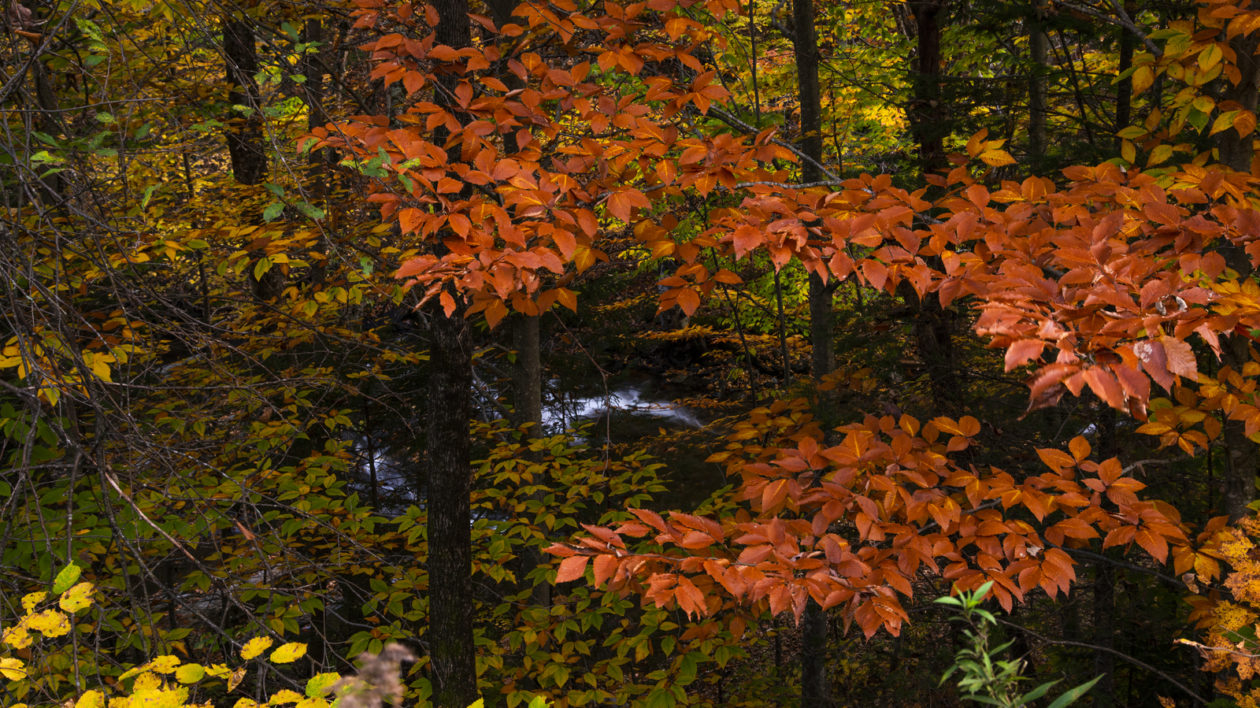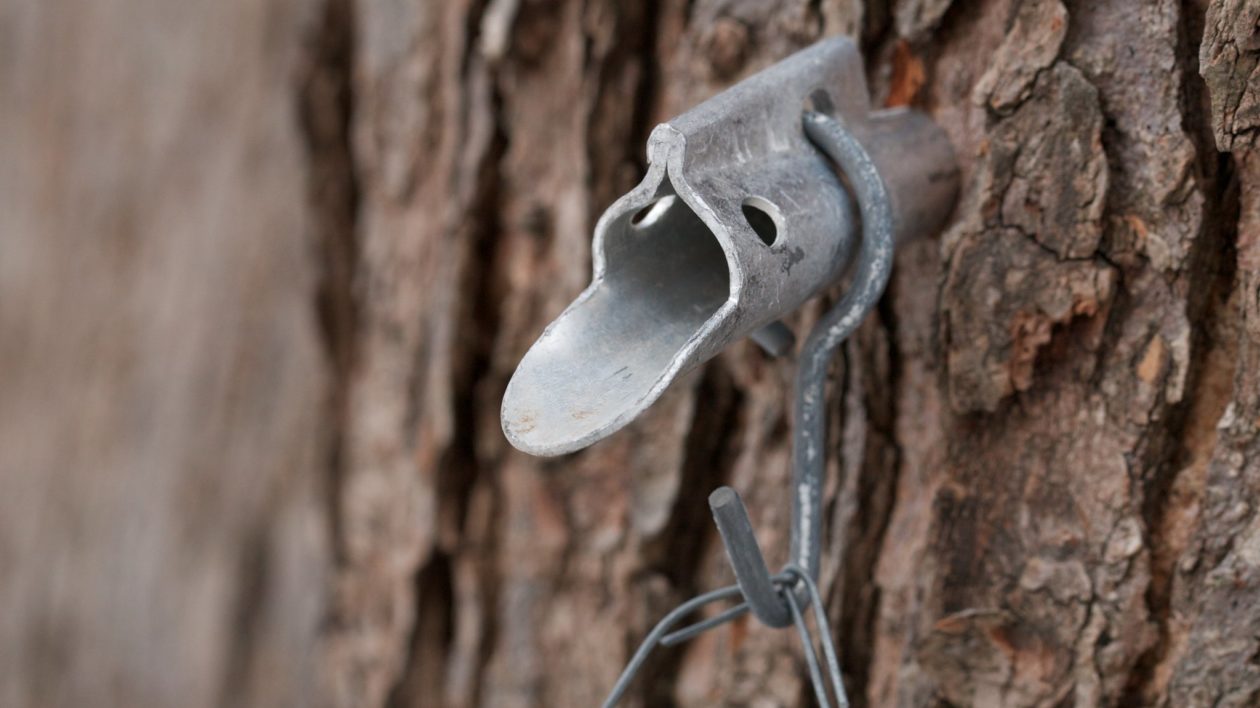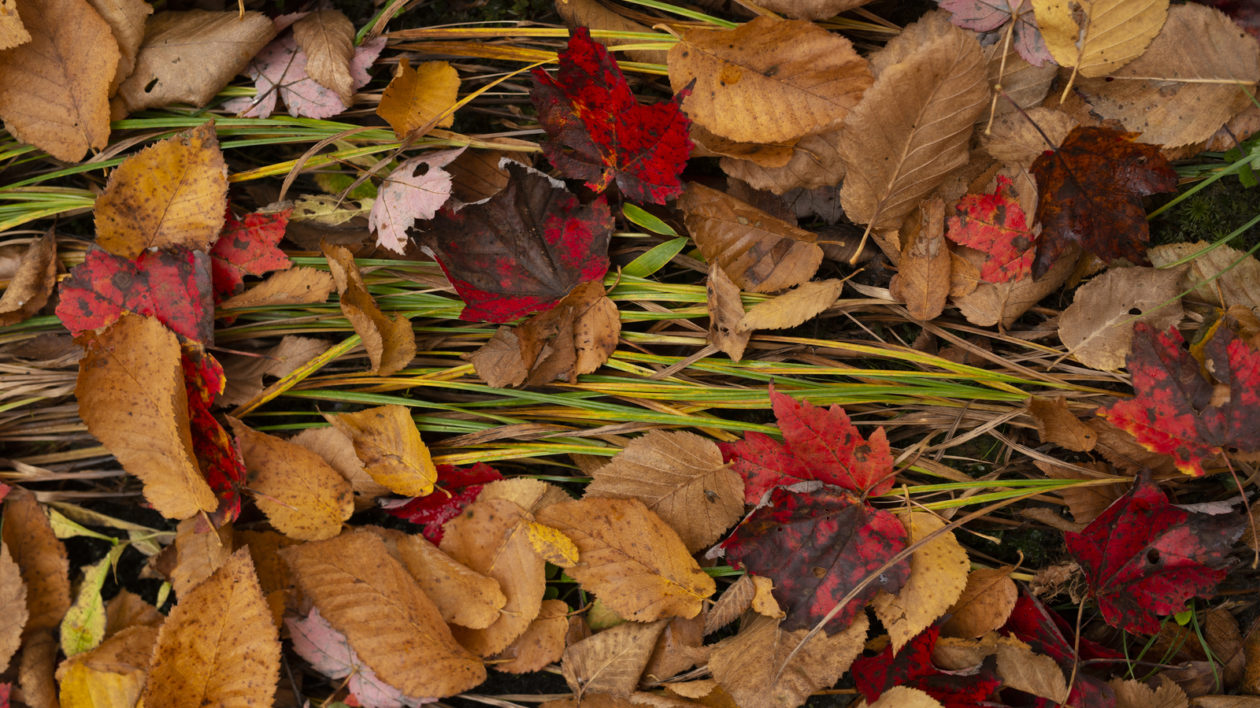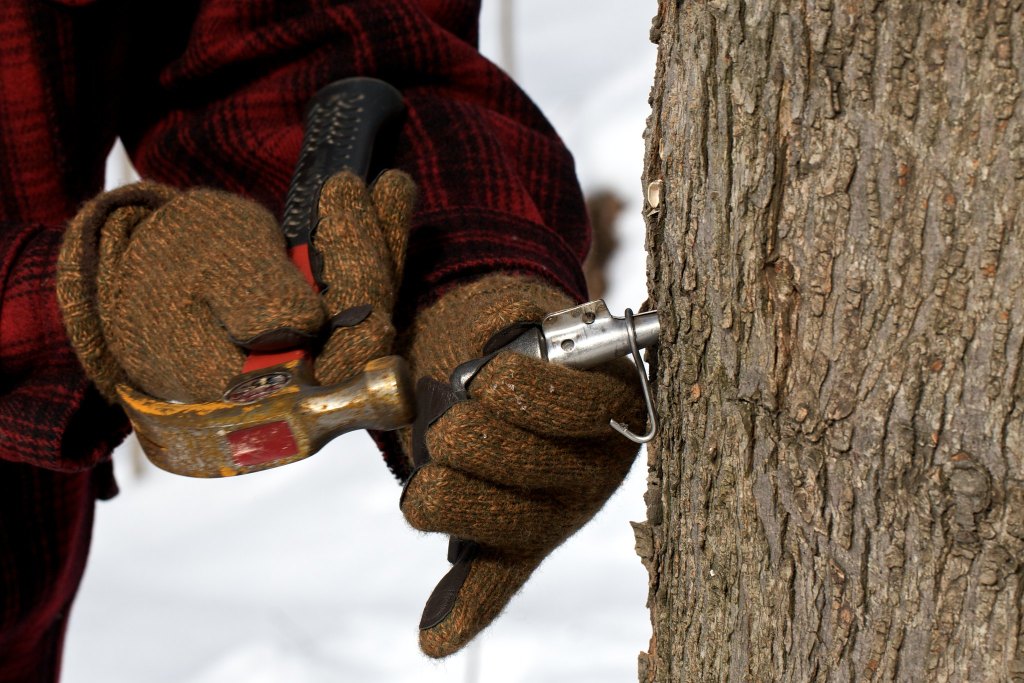March is tree tapping season across the upper Midwest, New England, and southern Canada. As the cardinals start to sing again in the northwoods, the long-dormant timbers are also responding to the first signs of early spring.
Sap is stored in the roots over winter, but as temperatures begin to rise, it starts flowing through the xylem layer of the tree.
For a number of species, the sap flow becomes a sweet treat and a renewable resource for those working the sugarbush.
Tapping Throughout History
The exact origins of making maple syrup are a bit of a mystery. It is clear that a number of indigenous tribes in northeastern North America were utilizing this natural resource, and the process predates European settlers.
One theory is that venison meat was boiled in tree sap. Hot rocks might have been added to vats of sap to facilitate steaming. Another idea is that icy layers were removed from sap, which concentrated the sugars in the liquid that remained.
Historically sap was consumed directly. This maple water is occasionally seen in stores today, but the trend hasn’t caught on nearly as much as syrup.
Maple sugar was also a product of historical importance. By the mid 1800s maple was mostly replaced by cane as the dominant source of sugar.
Today maple syrup continues to be an expanding industry. Quebec is the leading producer of maple syrup. The province is responsible for 70 percent of the world supply.

The United States produces more than 4 million gallons of syrup annually from approximately 13 million commercial taps. Vermont leads the way in commercial production in the U.S. with maple products bringing in upward of $60 million to the economy of the Green Mountain State. New York, Maine, Wisconsin, and New Hampshire round out the top 5 states in maple syrup making.
On The Nature Conservancy’s St. John River Forest project in northwest Maine, a maple sugaring leasing program was initiated in 2019. Eventually, TNC plans to have 60,000 taps on the property as a part of the land management strategy.
This will maintain mature stands of maple and prove habitat for birds, especially nesting warblers, while maintaining a revenue stream.

From Tree to Table
Converting sap to syrup is a simple enough process for commercial operations and hobbyists alike. Spiles (rhymes with smiles) are small wooden or metal spouts used to funnel the sap into collection buckets or bags. These hollow tubed spiles are tapped into small holes drilled a couple of inches deep into the trees. Multiple spiles can be supported by larger mature trees.
Healthy trees can be re-tapped year after year, the bellybutton like scars of past tap holes remain visible, but no harm is done. Some producers choose to run miles of tubing from the trees straight to the boiling facilities. Vacuum extraction techniques are also utilized by some producers.
For naturalist Karen Kerans, who has been tapping trees in southeast Wisconsin for 40 years, the initial appeal was the quiet ambiance she found in the woods. “It was just me and the blue jays and the trees,” she said.

Trees are tapped in late winter. Nighttime temperatures below freezing with daytime highs above freezing create ideal conditions for sap harvest. Over the course of the 4-6 week season, a single tap can generate 10–20 gallons of sap.
Sap takes on an off flavor as trees bud out in the spring, so the window for syruping is quite limited.
The sap must be heated allowing excess water to evaporate off during the boil down process. Large producers rely on reverse osmosis technology, but backyard harvesters cook sap down over an open flame or a propane burner.
“Boiling sap may seem like a laborious pursuit, but for me, it’s the opposite,” says Kerans. “After the fire is lit and the sap settled in its pan, it’s time to slow down and just watch it boil.”
Large pans are the preferred vessels for boiling down sap. Sap becomes syrup when it hits 219 degrees Fahrenheit. This brings the sugars to approximately 66 to 67 percent.
Experienced maple sugarers will tell you, the final minutes of the boil down can be extremely nerve wracking. The syrup can scorch in the blink of an eye. The final product is less thick and sticky than table syrups.
While Kerans finds joy in the entire process, she is especially fond of sharing her enthusiasm with others.
“One of my favorite things about making maple syrup is watching someone’s eyes light up when I give them their first taste of the real thing, fresh from the pan,” she says. “Nothing like it. It’s the same for kids and adults.”

Sap Syrup Species
While all trees have sap, not all sap is created equal when it comes to making syrup.
Sugar maples are the prized producers thanks in part to the higher concentrations of flavor enhancing compounds.
It takes about 40 gallons of sap to produce a single gallon of syrup from sugar maples. Other trees can require twice that ratio. Various types of maples, boxelder, walnut, sycamore, birch, and a few additional tree species have all been tapped for syrup making.
Red maple has a somewhat less sweet flavor than sugar maple. These species tends to leaf out earlier curtailing the tapping season.
Boxelders are botanically in the maple family. Boxelder syrup can be brighter, nearly orange, in coloration. The taste profile ranges from butterscotch to citrus.
Black walnuts offer up a nut crop, a potential dye, and a source of syrup. Black walnut sap tends to flow at a slower rate, but when boiled down the syrup has a strong flavor with more earthy nuttiness than the sweetness of maple.
Sycamores are widespread and can easily be identified even in late winter. The sap of this species boils down to a light yellow color and has flavors with hints of honey and peanut brittle.
Paper birch is more widespread in the northern regions of Alaska, Canada, and Russia. It takes up to 100 gallons of sap to create a gallon of birch syrup. The final product is popular in marinades, sodas, and baked goods.
Shagbark hickory syrup has regional appeal in the east. This is not made from sap though, instead, chunks of tree bark are boiled and steeped like a tree tea.




I’ve learned a lot about tree saps and the use for them on my meat’s now I can open up my restaurant
I’m concerned that the article didn’t mention that tapping can slow tree growth, especially if done incorrectly, and also allow fungus to invade the wound.
Reply to Betty McAtee,
Yes, the resultant steam when condensed yields pretty close to distilled water.
Fascinating, I had no idea. I want to try the butterscotch one.
When the sap is boiled down to produce the syrup, can the steam be condensed into pure water??
You can also tap Norway maples- invasive and found nearly everywhere, so they can be a good option for people in more urban areas. The ratio can be anywhere from 45-60:1. Our backyard Norway maple syrup is delicious!